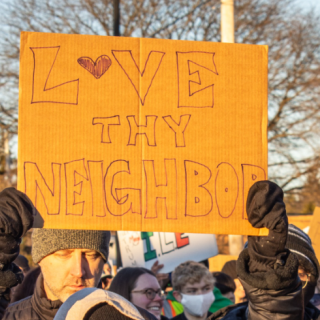Ohio is on the verge of making marijuana fully legal, but no surprise is the unlucky timing for proponents. Stuck in purgatory in the Ohio Statehouse is a proposed citizen-initiated statute which will make marijuana legal for adults 21 and over.
The Coalition to Regulate Marijuana like Alcohol (CTRMLA) and its canvassers gathered signatures at shopping plazas late last year gaining 136,729 valid signatures. Their goal is to force the Ohio legislature to consider their legislation for November’s ballot. An answer from the Statehouse is due in May.
CTRMLA’s law would give 36 percent of earned taxes to support social equity and jobs, and it also legalizes home grow with a limit of six plants per person and 12 plants per household. Ohio’s current Medical Marijuana Control Program forbidshome-based cultivation, a point of contention with many of the state’s patients.
But so far, Ohio Governor DeWine and Ohio House Majority Leader Bill Seitz (R-Cincinnati) are giving CTRMLA’s fully legal the ol’ cold shoulder. DeWine has vowed to veto it, saying he’s concerned by the “increased use by underage kids and that small children could consume marijuana-laced foods that look like candy.”
With lines out the doors at Columbus medical dispensaries, CTRMLA is piggybacking off the medical program’s growing popularity. But the medical program has also come under heavy criticism from thousands of patients.
The medicine is below average and expensive, say some. Others look north, just three hours up the road, where it’s fully legal, the product is far superior and also cheaper. THC vape cartridges, for instance, go for over $50 at Ohio med dispensaries while fully legal carts sold in Michigan go for over $30 and of far greater quality.
Medical marijuana advocate and former heroin addict Anthony Ballein does not make the trip to Michigan. He depends on the state’s program to keep him off heroin so he can take care of his grade school-aged daughter. Heroin is not a qualifying disorder, but the Ohio legislature is considering it.
“I get they have to make money but sometimes it’s straight highway robbery. The product has improved since two years ago when I got my card but it’s improving at a snail’s pace,” says the 30-something Ballein who lives near Cincinnati. “They run out of product sometimes. If this were a Kroger pharmacy or CVS, they would be closed down.”
Because the medicine is much more expensive than what can be purchased from Ohio’s illegal market, questions have been rising like clouds post-bong hits. Who’s hoarding all the patient’s cash? One primary problem is the fact that the federal government still refuses to pass legislation allowing banks to serve the cannabis industry.
Rob Ryan, director for the medical advocacy nonprofit the Ohio Patient Network, says it must be the state. Growers and dispensaries are saddled with so much regulation it’s eating into their revenue, he says. For example, each dispensary is required to have two surveillance systems in place in case one goes down.
“They’re just accumulating it,” he says about the state “They have said, ‘this is how much we have taken in,’ but they don’t necessarily always say ‘how much it costs them.’ Where the money is going is another good question.”
Which suggests that the CTRMLA, in some ways, is seeking to retake market share from the state. No surprise is how some of the major players behind Ohio’s medical program are throwing serious money in support of CTRMLA’s legislation.
A majority of contributors are the state’s medical growers, such as the Firelands Co. of Cleveland ($160,000) and Buckeye Relief of Eastlake ($50,000), which probably irks Ohio medical marijuana card holders who often lament these growers’ products are par for the course – overpriced and of low quality.
Locally, the Battle Green Holdings LLC, a foreign limited liability corporation, which doesn’t necessarily mean they are based in another country, kicked in $160,000 to the campaign. But no one is entirely sure who or what is Battle Green Holdings, they apparently have an office on Gay Street.
What we do know is that the CTRMLA is backed by the nation’s most influential pro-marijuana lobbyist group, the Marijuana Policy Project (MPP). They helped pass Ohio’s medical marijuana law in 2016 and has backed this ballot effort with nearly $700,000.
The Free Press has tried to speak with CTRMLA leadership, but not a single response. The number listed on their website is not working. In fact, their response is typical of many Ohio marijuana players – their lips are zipped like a dispensary’s smell-proof bag.
Nonetheless, if the Ohio legislature gives full recreational the cold shoulder (and then returns to their glasses of chardonnay, overpriced whiskey, AR-15s and Cardinal Health campaign contributions), the CTRMLA can bypass the Statehouse altogether. And in the few public statements they’ve issued, promised to once again invade shopping plazas with canvassers.
“We are fully prepared to collect additional signatures and take this issue directly to voters on November 8, 2022,” said CTRMLA spokesperson Tom Haren in a statement to the press. “Eighteen states have already legalized cannabis for adult use, including our neighbor to the north.”
But putting a citizen-initiated statute on the ballot without Ohio legislature approval requires 443,000 valid signatures with minimums from at least 44 Ohio counties, a daunting and expensive task for sure. Especially when reports are circulating online CTRMLA canvassers were harassed during their last signature drive.
Even if it were to make November’s ballot, full legalization is no lock. A poll of 410 registered voters in February by Emerson College revealed 50.4 percent are in favor, 39.7 percent are opposed, and 10 percent undecided.
What’s more, opposition to CTRMLAwas kickstarted last month by The Center for Christian Virtue, an evangelical conservative Christian public policy organization (lobbyists) with an office across from the Statehouse.
Also don’t forget how in 2015 a full legalization vote (Issue 3) was resoundingly rejected with only 36 percent voting in favor, but longtime Ohio marijuana advocates remain undeterred.
“This will happen. The question is, ‘When and how?’” says Ryan. “My belief is it should have never been made illegal in the first place. The Ohio Patient Network supports (full) legalization because only when its fully legalized will it be adequately studied and the beneficial properties documented, and people will have access to it as they see fit.”
Patients feigning limps to get medical cards. A cash-only operation. Canvassers alleging harassment by “Big Pharma” or evangelicals as they collect signatures to get full legalization on the ballot. Ohio marijuana dispensaries and growers and their lack of transparency.
Even so, Ryan insists Ohio’s marijuana frontier is not the new Wild West of American cannabis.
“California was the ultimate Wild West, they had beach bikini doctors on Muscle Beach. Things have matured,” says Ryan.
According to a CTRMLA press release their proposed law would do the following:
- Legalizes and regulates the cultivation, manufacture, testing, and sale of marijuana and marijuana products to adults aged 21 and up.
- Legalizes home grow for adults aged 21 or older with a limit of six plants per person and 12 plants per household.
- 36 percent of the tax will support social equity and jobs programs – if passed, it is estimated this could generate $150 million or more annually for social equity and jobs programs in Ohio.
- 36 percent to provide funding for communities who host adult use cannabis dispensaries - if passed, it is estimated this could generate $150 million or more annually for the communities who have adult use dispensaries.
- 25 percent to fund education and treatment for individuals with addiction issues – if passed, this statute could generate $104 million or more annually to research and treat substance abuse in Ohio.
- 3 percent to the Division of Cannabis Control and Tax Commissioner fund to cover regulatory and administrative costs for overseeing the adult use cannabis industry.



